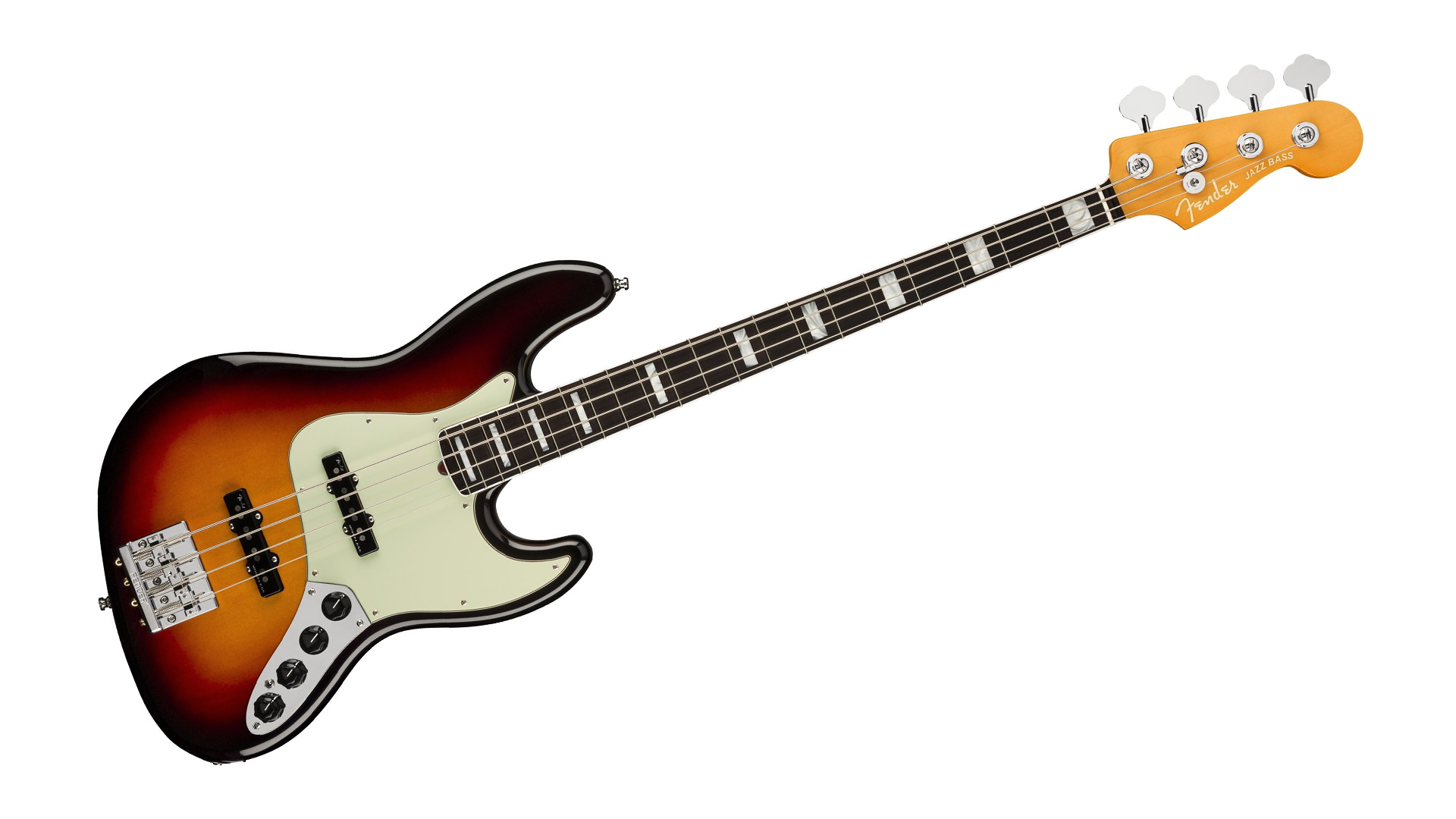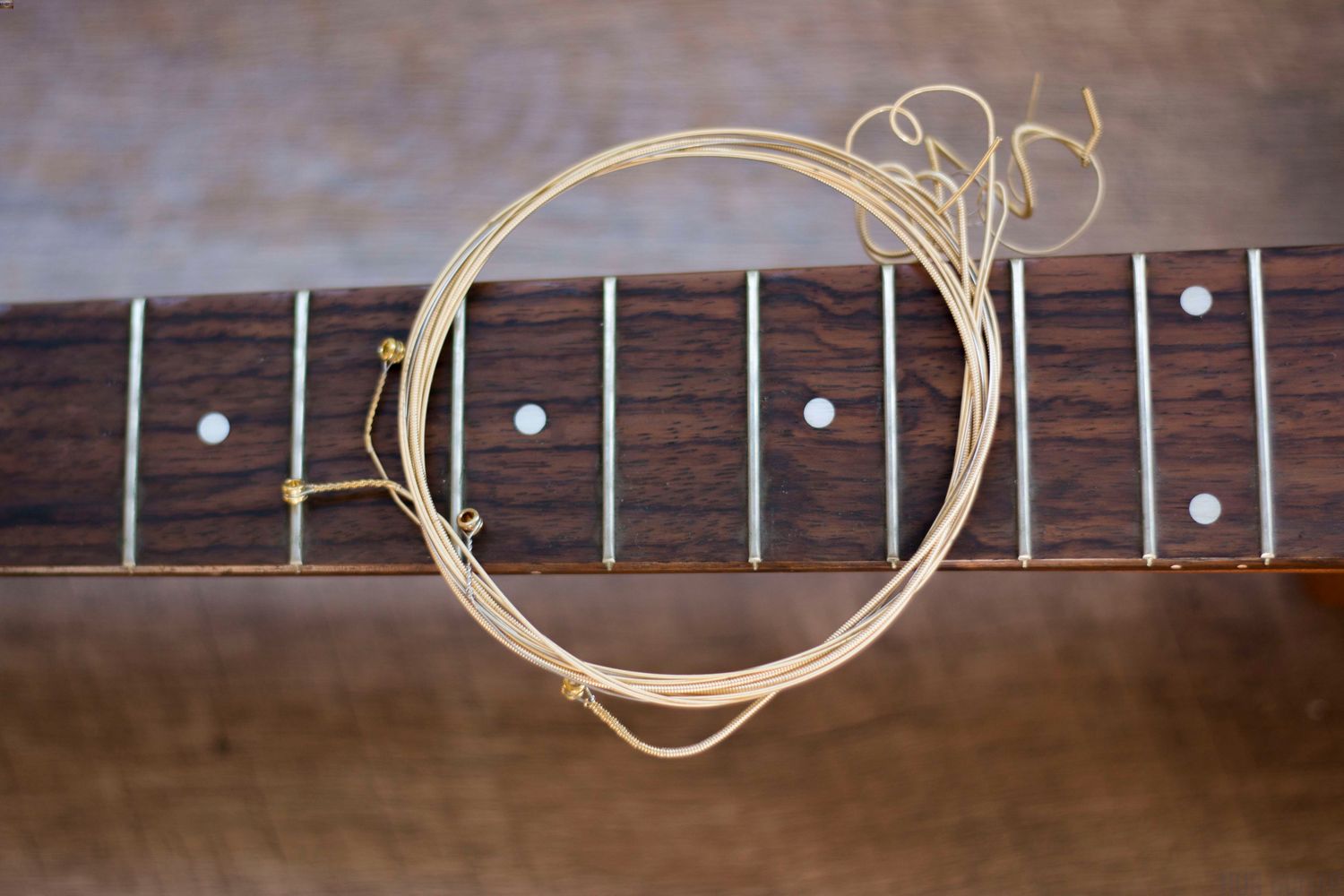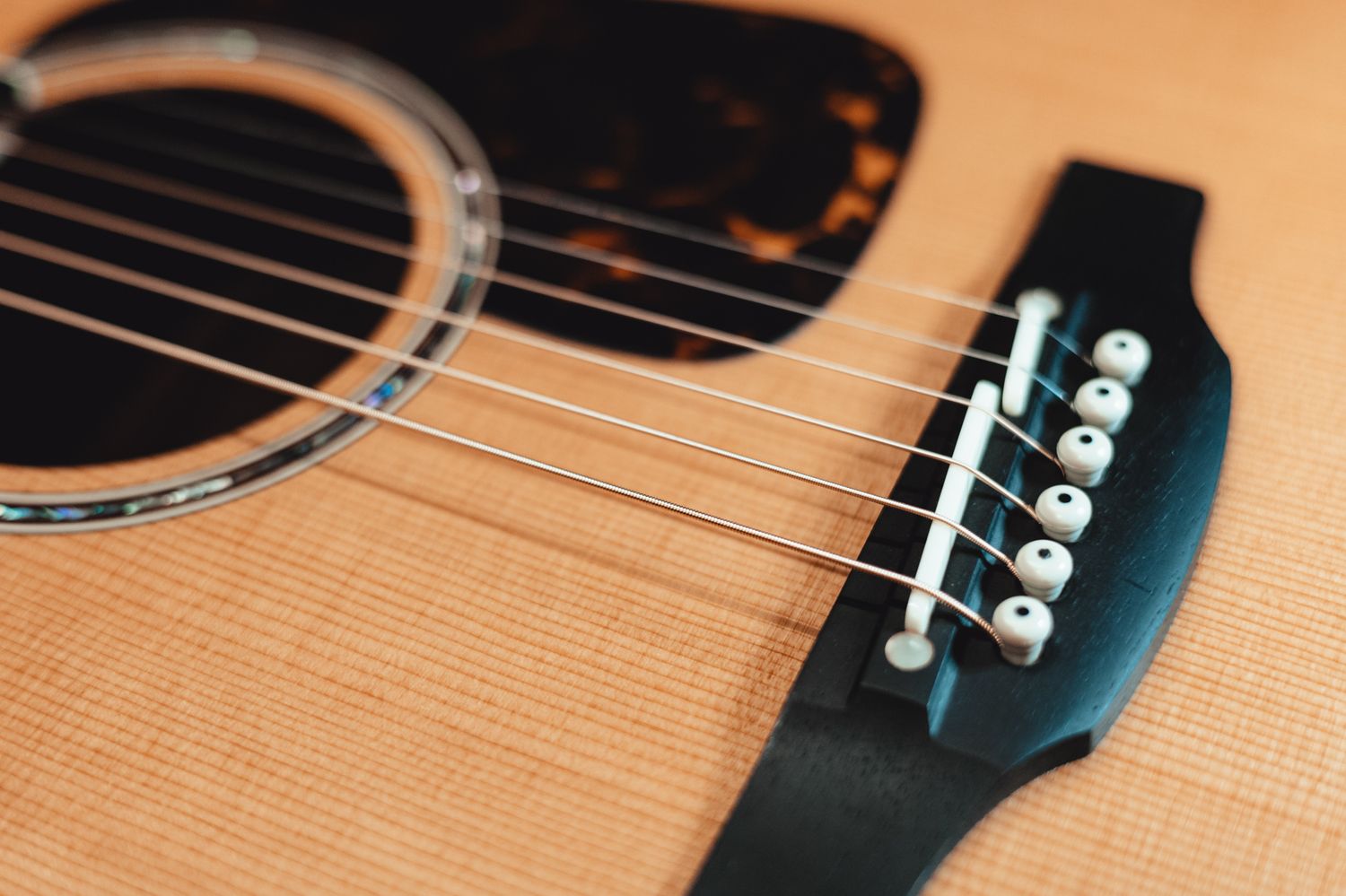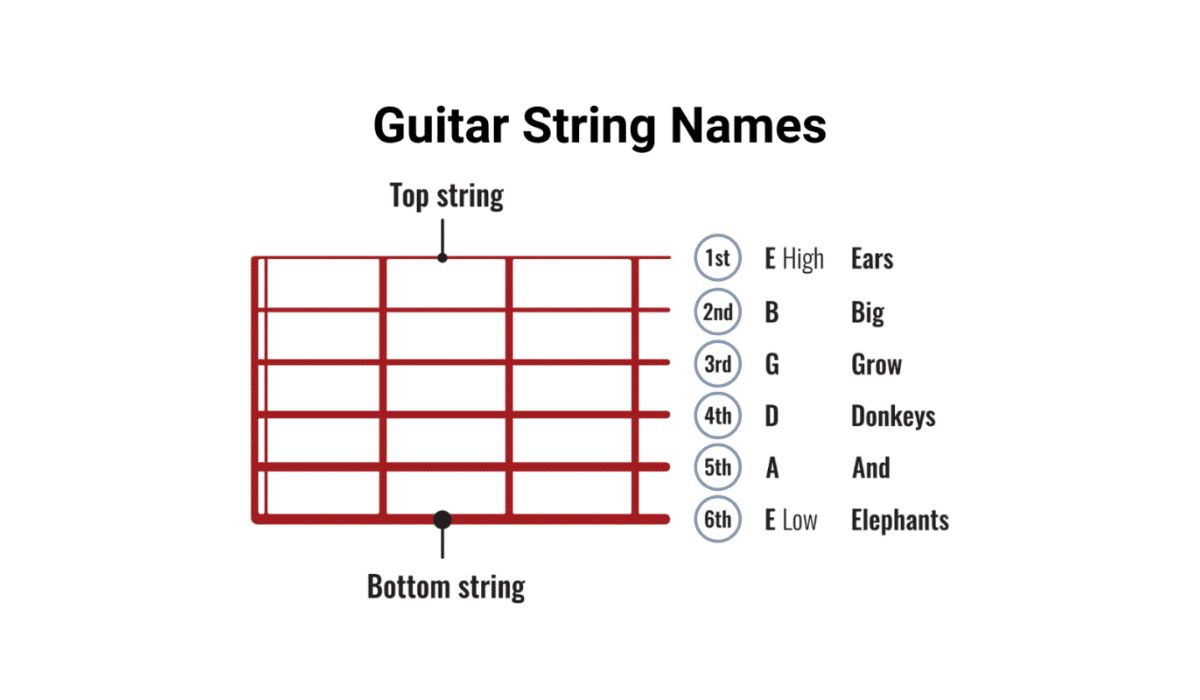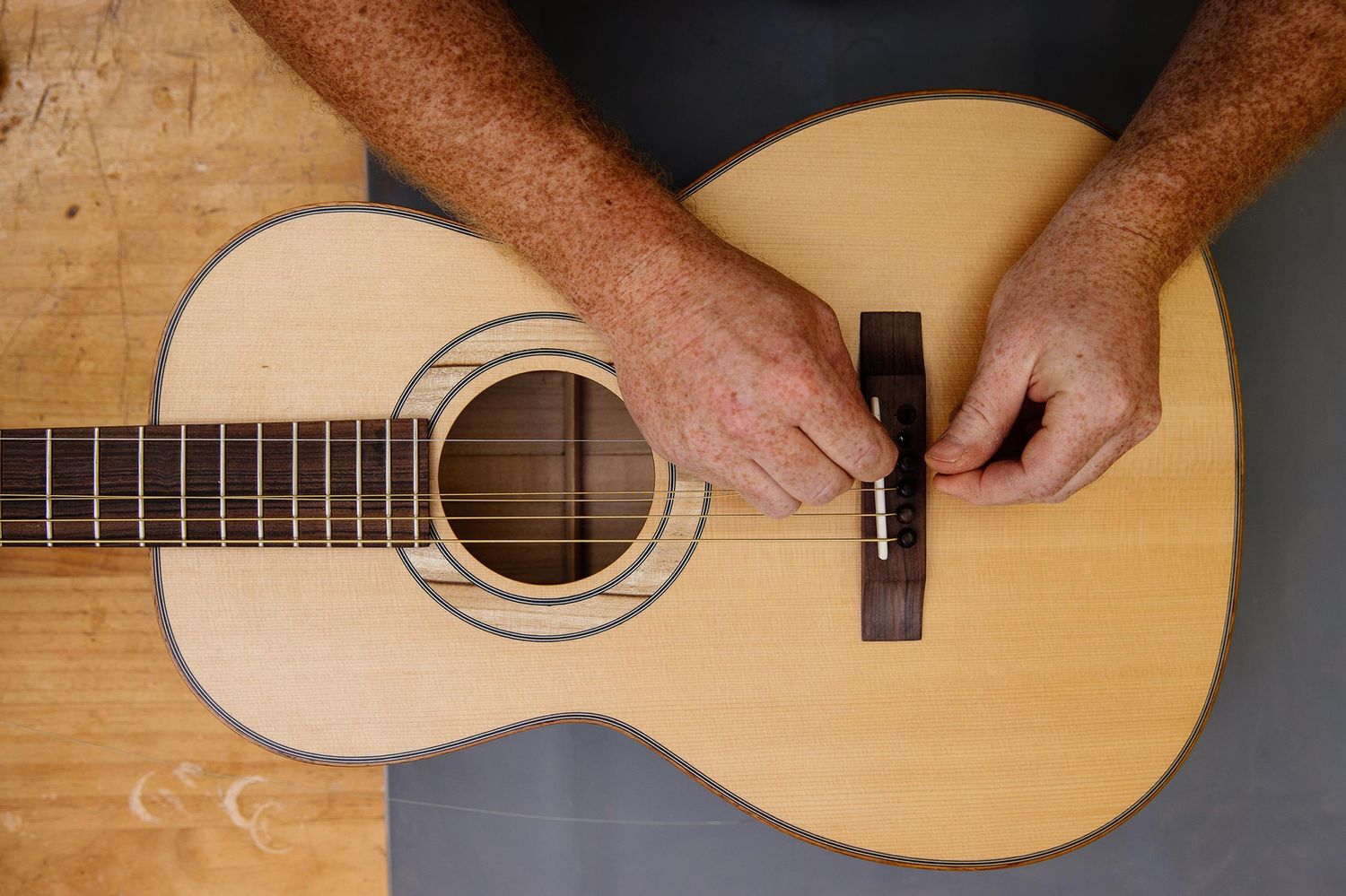Home>Instruments>Guitar>What Are The 6 Strings On A Guitar


Guitar
What Are The 6 Strings On A Guitar
Published: February 15, 2024
Discover the purpose and tuning of the 6 strings on a guitar. Learn about the role of each string and how they contribute to creating beautiful music. Explore the basics of guitar strings and their significance in playing the instrument.
(Many of the links in this article redirect to a specific reviewed product. Your purchase of these products through affiliate links helps to generate commission for AudioLover.com, at no extra cost. Learn more)
Table of Contents
Introduction
When you pick up a guitar, you’re not just holding an instrument; you’re embracing a world of musical possibilities. At the heart of this versatile instrument are its strings, each with its own unique characteristics and importance. Whether you’re a seasoned guitarist or a beginner eager to learn, understanding the intricacies of the six strings on a guitar is fundamental to mastering this iconic instrument.
Exploring the anatomy of a guitar reveals the six strings, which are the lifeline of its melodic resonance. Each string contributes to the instrument’s tonal range, allowing for a diverse array of sounds to emanate from its body. From the mellow hum of a low E string to the shimmering twang of a high E string, these six components form the backbone of the guitar’s expressive power.
Throughout this article, we will delve into the essential aspects of guitar strings, shedding light on their names, materials, tuning, and more. By unraveling the mysteries of these strings, you’ll gain a deeper appreciation for the instrument and the music it creates. So, let’s embark on this harmonious journey and unravel the secrets of the six strings on a guitar.
String Names and Tuning
Before strumming your first chord, it’s crucial to familiarize yourself with the names and tuning of the six guitar strings. From the thickest to the thinnest, the strings are traditionally named E, A, D, G, B, and E. This mnemonic device, “Eddie Ate Dynamite, Good Bye Eddie,” is a popular aid for memorizing the string names in ascending order.
Each string is tuned to a specific pitch, and standard tuning for a six-string guitar is EADGBE. The lowest-pitched string, also known as the 6th string, is tuned to E2, followed by A2, D3, G3, B3, and the high-pitched E4 string. This standard tuning provides a balanced foundation for playing a wide variety of musical styles and genres.
However, alternative tunings offer a creative avenue for exploring unique sounds and chord voicings. Popular alternate tunings include Drop D (DADGBE), Open G (DGDGBD), and DADGAD, each lending a distinct sonic character to the instrument. Understanding the names and tunings of the guitar strings empowers you to navigate the fretboard with confidence and creativity.
Whether strumming gentle folk melodies or unleashing blistering rock riffs, the arrangement and tuning of the six strings on a guitar form the cornerstone of its sonic identity. As you embark on your musical journey, mastering the nuances of string names and tuning will pave the way for a harmonious and fulfilling experience with this beloved instrument.
String Order and Numbering
Understanding the order and numbering of guitar strings is essential for navigating the fretboard and interpreting musical notation. The strings are typically numbered from the thinnest to the thickest, with the high E string designated as the 1st string and the low E string as the 6th string. This numbering scheme aligns with standard tablature and sheet music notation, providing a clear reference for fretting and picking techniques.
When viewing the guitar from a player’s perspective, the string order appears reversed, with the low E string positioned closest to the player and the high E string farthest away. This inverse orientation reflects the visual layout of the instrument and aids in visualizing chord shapes and scale patterns across the fretboard.
Additionally, the string order influences the execution of techniques such as string bending, vibrato, and arpeggios, as the player’s hand must navigate the strings in a specific sequence to produce desired sounds and articulations. Familiarizing yourself with the string order and numbering is akin to mastering a map of musical exploration, enabling you to traverse the guitar’s terrain with precision and artistry.
As you embark on your guitar journey, embracing the significance of string order and numbering will empower you to interpret musical notation, communicate with fellow musicians, and unlock the instrument’s expressive potential. By internalizing the spatial relationships and numerical designations of the six strings, you’ll embark on a melodic odyssey filled with discovery and creative expression.
String Materials
The materials used in crafting guitar strings play a pivotal role in shaping the instrument’s tonal characteristics and playability. Traditionally, guitar strings were fashioned from animal intestines, a practice that persisted for centuries and yielded a warm, mellow sound. However, modern guitar strings predominantly feature steel or nylon compositions, each offering distinct sonic attributes and performance qualities.
Steel strings, commonly found on acoustic and electric guitars, are renowned for their bright, articulate sound and robust projection. These strings are crafted from high-carbon steel, which delivers enhanced durability and resilience to the rigors of frequent playing. The magnetic properties of steel strings also make them ideal for amplification in electric guitars, producing a vibrant, responsive tone that resonates with clarity and presence.
In contrast, nylon strings, prevalent on classical and flamenco guitars, impart a mellower, more subdued timbre. Composed of nylon filaments, these strings offer a gentle feel under the fingers and produce a warm, intimate sound ideal for fingerstyle playing and intricate melodic passages. The inherent flexibility of nylon strings contributes to their expressive dynamics and nuanced tonal nuances, enriching classical guitar repertoire with depth and emotive resonance.
Furthermore, variations in string winding materials, such as phosphor bronze and nickel-plated steel, further diversify the sonic palette available to guitarists. Phosphor bronze strings, favored for acoustic guitars, yield a rich, balanced tonality with pronounced warmth and sustain, while nickel-plated steel strings, prevalent in electric guitar sets, exhibit a bright, articulate sound ideal for achieving cutting-edge clarity and punch.
By understanding the diverse materials employed in crafting guitar strings, you can tailor your instrument’s sonic character to suit your musical preferences and playing style. Whether seeking the vibrant shimmer of steel strings or the nuanced warmth of nylon, the choice of string materials empowers you to sculpt your sonic identity and embark on a melodic odyssey uniquely your own.
String Tension and Gauges
The tension and gauge of guitar strings significantly impact the instrument’s playability, tonal response, and overall performance. String tension, dictated by the force exerted on the strings when tuned to pitch, directly influences the guitar’s responsiveness, fretting ease, and resonance. Lighter gauge strings exert less tension, offering a more pliable feel under the fingers and facilitating effortless bending and chord transitions. In contrast, heavier gauge strings produce higher tension, yielding enhanced sustain, robust projection, and a firm, articulate response ideal for aggressive playing styles and drop tunings.
Guitar string gauges, denoting the diameter of the strings, are commonly categorized using numerical designations such as light (e.g., .010-.046), medium (e.g., .011-.052), and heavy (e.g., .012-.054). Light gauge strings, featuring thinner diameters, are favored for their ease of playability and versatility across musical genres, making them an ideal choice for beginners and seasoned players seeking agility and expressive freedom.
Medium gauge strings strike a balance between playability and tonal depth, offering a robust, well-rounded sound suitable for a wide spectrum of playing styles. Their moderate tension and enhanced projection make them a popular choice for players seeking a versatile foundation for diverse musical pursuits, from intricate fingerstyle compositions to dynamic strumming and lead work.
Heavy gauge strings, characterized by thicker diameters, bestow a commanding, resonant sound with extended sustain and formidable projection. These strings are well-suited for genres demanding powerful, articulate articulation, such as blues, rock, and metal, where their substantial tension and assertive tonal presence elevate the instrument’s sonic capabilities.
Furthermore, variations in string materials and construction techniques, such as coated strings and compound-wound designs, further refine the tonal nuances and longevity of guitar strings, offering players a diverse array of options to tailor their instrument’s sound and feel to their preferences.
By navigating the intricacies of string tension and gauges, guitarists can customize their instrument’s playability and sonic character, forging a musical path uniquely attuned to their artistic vision and expressive aspirations.
Conclusion
Embarking on a journey to unravel the secrets of the six strings on a guitar has unveiled a tapestry of sonic exploration and musical discovery. From the resonant vibrations of steel strings to the intimate warmth of nylon, the diverse materials and tonal characteristics of guitar strings offer a kaleidoscope of expressive possibilities for players of all levels and genres.
Understanding the names, tuning, order, and numbering of the guitar strings forms the bedrock of musical communication and fretboard navigation, empowering guitarists to interpret notation, communicate with fellow musicians, and unleash their creative potential with confidence and clarity.
Exploring the dynamic interplay of string tension and gauges has illuminated the profound impact these factors exert on the instrument’s playability, tonal response, and sonic expressiveness. Whether seeking the agile responsiveness of light gauge strings, the balanced versatility of medium gauge, or the commanding presence of heavy gauge strings, players can tailor their instrument to suit their unique playing style and artistic vision.
As you embark on your melodic odyssey with the guitar, may the knowledge and insights gleaned from this exploration of the six strings serve as a compass, guiding you through the boundless realms of musical expression and creative fulfillment. Whether strumming gentle ballads, unleashing blistering solos, or crafting intricate fingerstyle compositions, the six strings on a guitar stand as steadfast companions, resonating with the echoes of inspiration and the harmony of artistic discovery.
Embrace the symphonic possibilities that await at your fingertips, and may the resonance of each string weave a melodic tapestry that reflects your unique voice and musical narrative. With each chord and melody, may the strings of your guitar echo the cadence of your heart and the resonance of your soul, uniting you with the timeless legacy of this beloved instrument.


